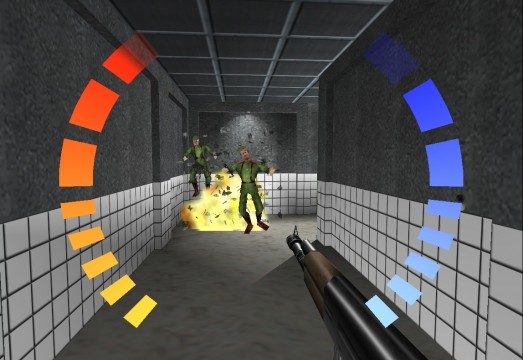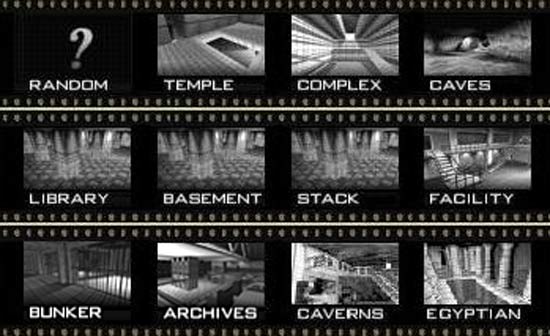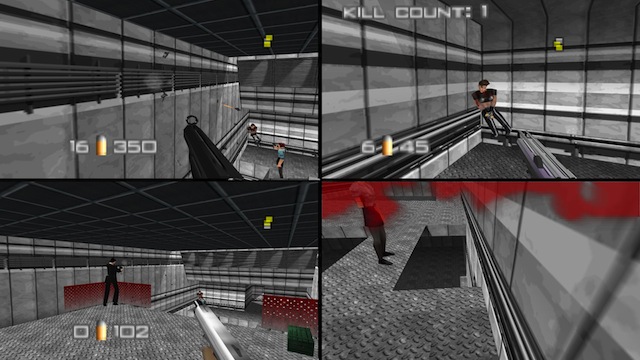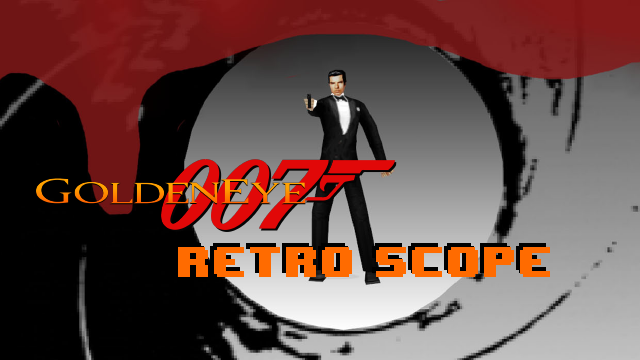We haven’t done one in a while, so a brief primer: Retro Scope is where we talk old games. Personal insights mixed with a bit of history for some retro gaming fun. Today we chat up GoldenEye 007.
GoldenEye 007 got me in trouble as a kid. I was 11 and very excited about the Christmas gift I’d just unwrapped at my grandma’s house that morning. I’d been looking forward to GoldenEye for months; Nintendo Power, the game company’s former nominal monthly publication, had been hyping the project and it looked like nothing I’d ever seen before. I knew not a speck about James Bond as he wasn’t much of anything in our household, but the movie had been a big deal and the game, to me, was shaping up to be an even bigger one.
I had an inkling that GoldenEye might be a no-go once I finally fired it up and began playing. The game was gorgeous and fun, but that gun on the screen all the time was sure to elicit the wrong kind of attention from my dad. Sure enough, one afternoon he happened upon me as I was playing and he was not pleased by the “walking gun” on the screen. 007 was banished… but not forgotten. I eventually played my way through GoldenEye many times despite the stern reprimand and its impact was every bit as strong as any of the other legendary games on Nintendo 64.
Ocarina of Time. Super Mario 64. Those seminal works are of obvious pedigree and import, but what makes GoldenEye so special? In the eyes of many a contemporary, younger player it’s likely that the merits of 007’s inaugural N64 outing are far from forthcoming. The single-stick control scheme, the bizarre, block-headed characters—what could possibly be special about GoldenEye?

Licensed games, especially movie tie-ins, had all tended to be utter muck up to the mid-1990s. Look no further than the abomination that was the Atari version of E.T. to see just how wrong a movie-based game can go—it helped to bring about the great industry collapse of 1983! Nintendo, meanwhile, was rather keen on obtaining the rights to produce a game based on the latest James Bond movie regardless of the bad history. As it so happened, Rare, based in England no less, seemed the perfect fit to actually develop the project. The game was theirs to make or break.
Martin Hollis was in charge of leading Karl Hilton, David Doak, Mark Edmonds, B Jones, Steve Ellis, Graeme Norgate, Grant Kirkhope, and Duncan Botwood to create what would become the GoldenEye that fans know and love. Early development of the game featured an on-rails version of the action with players maneuvering a targeting reticle around the screen to take out bad guys. What quickly dawned upon the designers was that the N64’s ability to render fully interactive 3D game environments was no joke. Of equal importance was that the controller’s unique analogue stick was very versatile and precise, which afforded the team to ask the question: what if we let folks move Bond around directly, instead?

What’s more, the objectives in first-person shooters were very much based in the DOOM-style of going down corridors looking for keys to locked doors and shooting everything in sight. Hollis’ squad were recruited for their love of Bond as much as their skill, and all involved were hopeful to reproduce an experience not unlike the ones in the movies themselves. There would be story, there would be objectives, there would be player choice in how to approach missions. Guns a blazing or slow and steady? Up to that point FPS games didn’t bother with this sort of nuance, but GoldenEye was going to change that forever.
The crew had limited access to the movie set of GoldenEye as well as a copy of the script. Restrictions were minimal, meaning the developers could expand the story where needed to produce more situations to play as Bond. They were also able to snap photos of the different locations in the film as well as the actors. Hollis’ team even rigged up some motion capture for GoldenEye in order to make the movement of the various enemies and characters look as authentic as possible.

Even aiming Bond’s gun was a fresh innovation, as the firearm could be manipulated independently of the in-game camera. The lack of a second control stick meant standing still to do this, but it was an addition which lent incredible accuracy to the player’s shooting abilities. Furthermore, the inclusion of a sniper rifle was another implementation that set the game apart from countless other shooters.
Yet, being able to shoot and move so fluidly was only effective because of the cerebral nature of the gameplay. Yes, there are instances where Bond lays waste to swarms of foes, but there are countless other times where the player needs to think to succeed. Learning enemy patrol routes to slip past guards undetected was a thrill in a world pre-Metal Gear Solid, as was rigging explosives, shutting down alarm systems, and more. Sure, some of this was just rejiggered DOOM mechanics, but the execution was far more clever and pleasing.

Sadly, following the acquisition of Rare by Microsoft, there’s never been a proper rerelease of GoldenEye in the years since. There was a remake that replaced star Pierce Brosnan with Daniel Craig (which was certainly fun), but beyond that fans have to fire up a Nintendo 64 to play the game. Whether or not we’ll ever be able to play GoldenEye proper on modern hardware is anyone’s guess, but this upstart shooter is one of the most important games to come out of the N64 era and sis till a delight to play even today.
Did You Know…
- GoldenEye shifted eight million units, putting it in third place behind Mario Kart 64 and Super Mario 64 as the best-selling games on the console.
- Perfect Dark is a spiritual successor to GoldenEye that jettisons all of the Bond references but is built atop a very similar style of play.
- Nintendo requested that Rare tame some of the realism of the death and gore; Rare actually de-saturated the color of the blood as a result of this!
- The game code contains data for previous James Bond actors from the films. Players would have been able to select between Roger Moore, Sean Connery, and Timothy Dalton, but legal issues at the eleventh hour scuttled this feature.
- The photos used for these models came from designer B Jones’ own personal collection of Bond books.
- Following the game’s launch, there were ardent, persistent rumors that “the island,” as fans dubbed it, could be reached in the Dam level. Able to be seen from virtually any position on the dam, the island is a small outcropping jutting from the water and tantalizingly beyond reach. Outside of hacking the game, it is inaccessible.
- An entire ZX Spectrum emulator with ten games is embedded in GoldenEye’s code. The intent was to have an arcade cabinet in-game that played old Rare and Ultimate Play the Game (the Stamper brother’s first studio) software. The idea was scrapped but the emulator is still there and functional.
- CD-based consoles like Sony’s PlayStation would seem in theory to be better suited for producing music for games, but according to composers Grant Kirkhope and Graeme Norgate, Nintendo 64’s cartridge’s actually provided them more ability to tailor the music to the gameplay. What’s more, they were also able to create a greater abundance of music as a result—over two hours!
- If you’d like even more knowledge about what secrets are in GoldenEye’s code, head to this The Cutting Room Floor link!




 ShareThis
ShareThis






